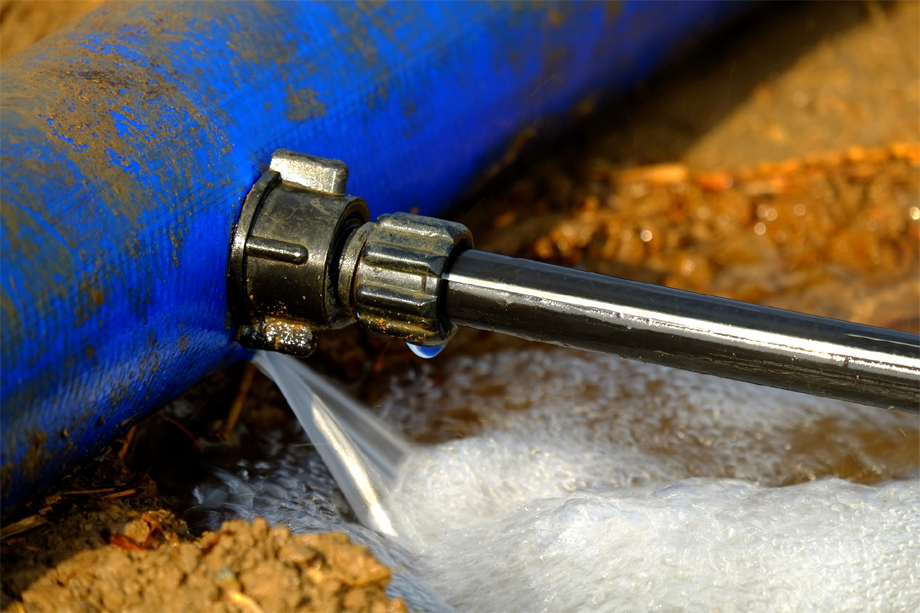Sızıntı Tespiti Nedir?
Su kayıpları, su temini sistemi içinde pek çok noktada oluşabilir. Fiziki Kayıplar ülkemizde en çok servis bağlantılarında oluşmaktadır. Genellikle kentsel altyapı çalışmalarında (atıksu toplama, yol asfaltlama, doğal gaz bağlantıları, telefon, elektrik vb. bağlantıları) kazı vb. işlemler sırasında servis bağlantıları zarar görmekte ve sızıntılar oluşmaya başlamaktadır. Zarar gören servis bağlantı boruları, ilgili altyapı faaliyetini gerçekleştiren firmalar tarafından istenilen düzeyde tamir edilememektedir. Sonuç olarak, iyi tamir edilemeyen servis bağlantılarında göreceli olarak düşük debili sızıntılar başlamakta ve uzun yıllar süresince yüksek miktarlarda su kaybedilmektedir. Sızıntı suyu, çoğu zaman sızıntı oluşan bağlantı noktalarında yüzeye çıkmamakta ve yeraltına sızarak yok olmaktadır.

Su dağıtım şebekelerinde kullanılan ve uzun süre güneş altında bekletilmiş plastik (PVC) su borularında sıklıkla sızıntılar oluşmaktadır. Borularda oluşan çatlaklardan sızıntılar başlamakta ve sızıntılar farkedilip tamir edilene kadar, uzun yıllar boyunca su kayıpları devam etmektedir. Ek olarak, eski borularda, temin ve dağıtım hatlarındaki çeşitli vanalar ve bağlantılarda da kayıplar oluşabilmektedir.
Aktif sızıntılar tespit edilerek hat üzerindeki sızıntı noktaları tamir edilmelidir. Eldeki sayısal veriler üzerinden şebeke üzerinde gezilerek, özellikle gürültünün az olduğu saatlerde akustik dinlemeler yapılarak, sızıntı noktaları tespit edilmelidir. Tespit edilen sızıntı noktalarının tamir edilmesi su kayıplarının azalmasında önemli bir unsurdur. Periyodik olarak uygulanması gereken bir işlemdir.
Sızıntıların Özellikleri
Sızıntıların aranması, belirlenmesi, yerinin tespit edilmesi ve onarımı üç aşamadan oluşur. Bu aşamalar Farkına varma (Awareness-A), Yer tespiti (Location-L) ve Onarım (Repair-R) ve kısaca ALR olarak tanımlanabilir. Bu yaklaşımda borulardaki sızıntılar, depolardaki taşmalar veya farklı noktalarda gerçekleşen kayıplar üç aşamada gerçekleşir:
- Farkına varma süresi - idarenin sızıntının farkına varması için geçen süre.
- Yer tespiti süresi - sızıntının yerinin tespit edilmesi için geçen süre.
- Onarım süresi - onarım veya tamirat için gerekli olan süre.
İdarelerin su kaybının/sızıntının farkına varması, yerini tespit etmesi ve son olarak onarımını yapması için harcadığı süre uzadıkça kaybolan su hacmi de artmaktadır. Yeraltına inen bir sızıntı fark edilene kadar haftalar ve hatta yıllar geçebilir. Bu nedenle, su kayıplarını azaltma stratejisi içinde sızıntıların farkına varma, yer tespiti ve onarım süreleri azaltılmalıdır.

Sızıntı Çeşitleri
Su idarelerinin kendi sistemleri içindeki farklı çeşitteki sızıntıların oluşumunu anlaması, sızıntı akış süresi ve ALR süreçleri ile toplam fiziki su kayıpları hacmini değerlendirmesi çok önemlidir. Sızıntı çeşitleri aşağıda belirtilmektedir:
- Bildirilen patlaklar – Görünür özelliktedir ve çoğunlukla halk tarafından hızlı bir şekilde bildirilir. Bu tür patlaklar için Farkına varma süresi kısadır.
- Bildirilmeyen patlaklar – Genellikle yeraltında oluşur ve yüzeye çıkmaz. Sıklıkla sızıntı tespiti çalışmalarında ortaya çıkarılır ve Farkına varma süresi uzundur.
- Arka plan sızıntısı – Çok küçük sızıntıların bileşimi ile oluşur. Bu tür sızıntıların tek tek tespiti ve onarımı işlemleri hem zor, hem de yüksek maliyetli olmaktadır.
Aktif sızıntı kontrolü, uygun maliyetli ve etkin su kayıpları yönetimi için hayati bir uygulamadır. Yer mikrofonları sızıntının neden olduğu ses/gürültüyü elektronik olarak güçlendirir. Bu cihazlar temas veya izleme modunda kullanım için monte edilebilir. Temas modu bağlantı parçalarını dinlemek için kullanılır ve elektronik dinleme çubuklarına benzer.
İzleme modu ise bağlantı parçaları arasındaki boru hatlarındaki sızıntıların aranmasında kullanılır. Bu yöntemde yer mikrofonu boru hattı üzerinde belirli mesafelerde yerleştirilir ve sızıntı noktasına yaklaştıkça değişen gürültü düzeyi takip edilir. Akustik kaydediciler veya sızıntı gürültü korelatörü tarafından bir sızıntının varlığı belirlendiğinde, saha ekibi tarafından sızıntı noktası için yer tespiti yapılabilir.

